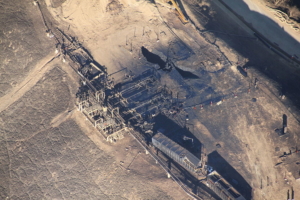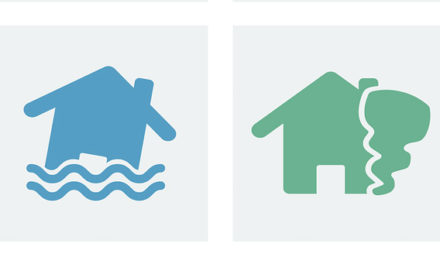Last October, a well at the Aliso Canyon natural gas storage facility in California suffered a blowout that leaked methane gas into the surrounding area, allegedly causing many to suffer from a range of physical ailments. As a result, approximately 8,000 families in the Porter Ranch community left their homes and were relocated.

Aerial view of the Aliso Canyon gas leak, two months after the incident began. By EARTHWORKS. [CC BY 2.0], via Wikimedia Commons
While some residents have returned home, many remain in their hotels, waiting to make sure that the leaked gas has dissipated. Some scientists have said that it is not the natural gas that makes people sick. Natural gas is odorless and colorless; a chemical called mercaptan is added to the gas to give it a smell so that people can discern if there is a nearby leak. In higher amounts, mercaptan can cause the ailments that Porter Ranch residents have reported. However, researchers are not sure that only mercaptan is to blame for the health issues.
The Los Angeles County Department of Public Health sampled the air in 111 homes in Porter Ranch and found metals in the air that could be hazardous to residents at elevated levels. The health department has recommendations for residents to remove the hazardous dust from their homes.
Since the leak, residents have been concerned about the prospect of a similar recurrence. Back in April, there was worry that methane was once again leaking. Aliso Canyon did not show any new leaks, and since that time, some residents have moved back into their home.
Now that the leak has been sealed, the state government is looking for ways to prevent future leaks, as well as ways that SoCalGas should pay for the damage. Residents have been filing lawsuits as well, and business owners are also suing over alleged lost revenue.
The energy company that runs SoCalGas and the Aliso Canyon facility announced last month that the leak will cost their company $665 million. This figure includes funds paid to relocate the thousands of people who left their homes, as well as legal costs and stopping the leak.
SoCalGas is hopeful that the Aliso Canyon facility will reopen in a few months. However, a state bill recently signed into law by California Governor Jerry Brown lays out what will be necessary for SoCalGas to once again inject or withdraw natural gas at the facility.
In the meantime, residents looking to sell their homes have watched their property values plummet. A recent study by RealtyTrac© and Greenfield Advisors found that sales volume is down 44 percent in the three months after the leak discovery. More lawsuits are expected, and residents will receive relocation assistance at least until June 7, when another hearing is scheduled.





Recent Comments